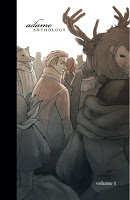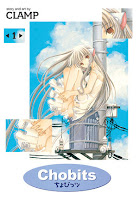My News and Reviews
Last week I announced the Blood Lad Giveaway Winner. The post also includes a list of manga licensed in English that feature vampires, too, if you’re looking for something to sink your teeth into. I posted two reviews last week in addition to the giveaway announcement. The honor of the first in-depth manga review for September goes to Shigeru Mizuki’s Kitaro. The manga collects stories from the first three volumes of Mizuki’s yokai classic GeGeGe no Kitaro. I absolutely loved it. I also reviewed Manga: Introduction, Challenges, and Best Practices, edited by Manga Bookshelf’s own Melinda Beasi and presented by the Comic Book Legal Defense Fund. It’s a great resource and recommended for anyone wanting to learn a bit more about manga. The book’s general release is in December, but it is possible to purchase an early copy directly from CBLDF.
Elsewhere online, Vertical’s licensing and reader survey is now open and will close on September 25. It’s a great way to let Vertical know what you’re reading. If you want you can even suggest manga you’d like to see Vertical publish in English. Related to Vertical manga, Matt Cycyk at Matt Talks About Manga has a nice post about Knights of Sidonia and why fans of Attack on Titan might want to check the series out—Attack on Sidonia: Selling Knights of Sidonia to Attack on Titan Fans. And speaking of manga, I was amused to come across the article Attack on Titan’s author causes a stir with his less-than-stellar sketches at RocketNews24. (Amused since I’m used to hearing complaints about the artwork in Attack on Titan and didn’t realize it was something so shocking.)
Quick Takes
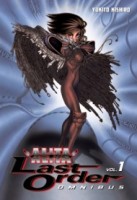 Battle Angel Alita: Last Order, Omnibus 1-2 (equivalent to Volumes 1-6) by Yukito Kishiro. Although I have been aware of Battle Angel Alita for quite some time I haven’t read any of the manga until now. Last Order is the original series’ immediate successor, serving as a sort of alternate ending. It’s still ongoing in Japan. The manga is a little difficult to jump into without already having some familiarity with the franchise; I frequently found myself confused why certain characters were important to the story and what their motivations were. But by the time I reached the second omnibus I had started to settle into the series and even began to enjoy myself. I like Last Order best when Kishiro isn’t trying to be too serious with the story and focuses more on the action—cyborg battles, ancient Martian martial arts, space karate, and so on. Alita is an appealing lead, but at the moment I think I like the more erratic and unruly supporting character Sechs even better.
Battle Angel Alita: Last Order, Omnibus 1-2 (equivalent to Volumes 1-6) by Yukito Kishiro. Although I have been aware of Battle Angel Alita for quite some time I haven’t read any of the manga until now. Last Order is the original series’ immediate successor, serving as a sort of alternate ending. It’s still ongoing in Japan. The manga is a little difficult to jump into without already having some familiarity with the franchise; I frequently found myself confused why certain characters were important to the story and what their motivations were. But by the time I reached the second omnibus I had started to settle into the series and even began to enjoy myself. I like Last Order best when Kishiro isn’t trying to be too serious with the story and focuses more on the action—cyborg battles, ancient Martian martial arts, space karate, and so on. Alita is an appealing lead, but at the moment I think I like the more erratic and unruly supporting character Sechs even better.
 Chi’s Sweet Home, Volume 10 by Konami Kanata. I can always count on Chi’s Sweet Home to bring a smile to my face. Kanata’s color work is lovely and Chi is adorable. I grew up around a lot of cats and continue to be surrounded by them, so I can particularly appreciate Chi’s antics. And with the tenth volume of Chi’s Sweet Home, there are even more kittens romping around—Cocchi and Chi have befriended a pair of sibling kittens. Kanata captures the attitudes and behavior of cats perfectly. Chi has finally come to the realization that she’s a not a human, but she still has a far way to go before mastering all the skills expected of a feline. In many ways Chi’s Sweet Home is very episodic, but there’s also the underlying story of Chi being separated from her original family. By the end of the tenth volume it looks as though she may be getting closer to finding her mother. (She’s easily distracted, though.) Generally the series is funny and sweet, but there’s a bit of sadness and drama, too.
Chi’s Sweet Home, Volume 10 by Konami Kanata. I can always count on Chi’s Sweet Home to bring a smile to my face. Kanata’s color work is lovely and Chi is adorable. I grew up around a lot of cats and continue to be surrounded by them, so I can particularly appreciate Chi’s antics. And with the tenth volume of Chi’s Sweet Home, there are even more kittens romping around—Cocchi and Chi have befriended a pair of sibling kittens. Kanata captures the attitudes and behavior of cats perfectly. Chi has finally come to the realization that she’s a not a human, but she still has a far way to go before mastering all the skills expected of a feline. In many ways Chi’s Sweet Home is very episodic, but there’s also the underlying story of Chi being separated from her original family. By the end of the tenth volume it looks as though she may be getting closer to finding her mother. (She’s easily distracted, though.) Generally the series is funny and sweet, but there’s a bit of sadness and drama, too.
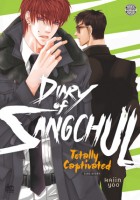 Diary of Sangchul by Hajin Yoo. Two side stories from Yoo’s Totally Captivated boys’ love manhwa were released in English. One of those is Diary of Sangchul, which is a prequel to the main series. It’s not absolutely necessary to have read Totally Captivated in order to enjoy Diary of Sangchul, but the manhwa will probably appeal most to those who have. The majority of the volume is devoted Sangchul’s story through which is shown Mookyul’s rise to power and how he earns the respect of the men who work under him. Dairy of Sangchul also reveals more about Mookyul’s relationship with the Chairman (who looks a lot younger here than he does in the original series.) Diary of Sangchul dovetails quite nicely with Totally Captivated. There is also a short manhwa about Mookyul and the Chairman’s first meeting included in the volume. In the epilogue Yoo goes on to outline the rest of their story. I’m not sure if she ever drew it, but I’m okay if she didn’t—it’s extraordinarily melodramatic.
Diary of Sangchul by Hajin Yoo. Two side stories from Yoo’s Totally Captivated boys’ love manhwa were released in English. One of those is Diary of Sangchul, which is a prequel to the main series. It’s not absolutely necessary to have read Totally Captivated in order to enjoy Diary of Sangchul, but the manhwa will probably appeal most to those who have. The majority of the volume is devoted Sangchul’s story through which is shown Mookyul’s rise to power and how he earns the respect of the men who work under him. Dairy of Sangchul also reveals more about Mookyul’s relationship with the Chairman (who looks a lot younger here than he does in the original series.) Diary of Sangchul dovetails quite nicely with Totally Captivated. There is also a short manhwa about Mookyul and the Chairman’s first meeting included in the volume. In the epilogue Yoo goes on to outline the rest of their story. I’m not sure if she ever drew it, but I’m okay if she didn’t—it’s extraordinarily melodramatic.
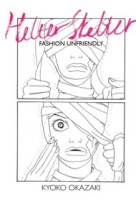 Helter Skelter: Fashion Unfriendly by Kyoko Okazaki. I’m always happy to see more josei released in English, but I was especially excited for Okazaki’s debut. Okazaki is a particularly influential josei artist. (The marvelous Moyoco Anno even once worked as her assistant.) The award-winning Helter Skelter is a harsh and brutal tale about the darker side of the entertainment industry. Thanks to drastic and repeated plastic surgery, Liliko is enjoying the height of her career as a celebrity but the operations can only take her so far. As her body begins to deteriorate her life begins to spin out of control. Her obsessions and society’s unrealistic expectations drive her to extremes; in the end she isn’t the only one ruined. Helter Skelther is an startling work. Even though the characters are often unlikeable, the manga is extremely engaging; it’s hard to look away from their unraveling. Helter Skelter works simply as fiction, but it can also be read as a deeper criticism of celebrity culture.
Helter Skelter: Fashion Unfriendly by Kyoko Okazaki. I’m always happy to see more josei released in English, but I was especially excited for Okazaki’s debut. Okazaki is a particularly influential josei artist. (The marvelous Moyoco Anno even once worked as her assistant.) The award-winning Helter Skelter is a harsh and brutal tale about the darker side of the entertainment industry. Thanks to drastic and repeated plastic surgery, Liliko is enjoying the height of her career as a celebrity but the operations can only take her so far. As her body begins to deteriorate her life begins to spin out of control. Her obsessions and society’s unrealistic expectations drive her to extremes; in the end she isn’t the only one ruined. Helter Skelther is an startling work. Even though the characters are often unlikeable, the manga is extremely engaging; it’s hard to look away from their unraveling. Helter Skelter works simply as fiction, but it can also be read as a deeper criticism of celebrity culture.










